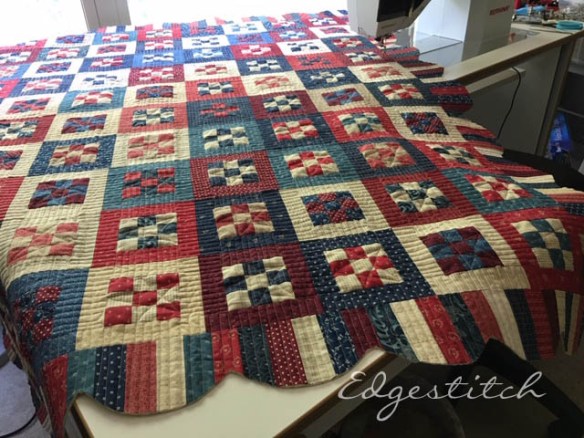
This barren pathetic patch of earth is where I’m setting up my community garden plot this year. The ground is hard, prone to weeds and, frankly, as inhospitable a piece of land as I’ve worked on in a long time. It reminds me of pics from Curiosity, the Mars Rover.
It’s clear to me that it’s been deprived of nutrients and expected to perform over and over with nothing returned to the soil.
But it’s mine this year.
In our house, it’s a season of beginnings and endings. My son is heading off to college in August, saying goodbye to an old school, old friends, and his old parents. Yesterday, he was 10 years old, reluctantly traveling with me to 30 quilt shops one summer. We did the entire Northern Illinois Quilt Shop Hop. He was supplied plenty of food, was instructed to be Chief Navigator and man of the GPS, and off we went. We found our way to unknown towns (with candy shops) and got lost in cornfields and stopped in strange places for food and potty breaks. He later told me it was the best summer he ever had.
Fast forward a few years to the present, and he (again reluctantly) is tasked with helping his mother by carting 10 bags of organic compost and spreading it out on that empty, unyielding piece of land. (I’m going to make sure he’s happy to be headed off to school.)
In return, I’m making him a quilt of his choosing. I won’t go into the horror on his face when I showed him all his t-shirts from middle school and high school and suggested I’d make a quilt out of those. It was as though nightmare zombies from the dead had reappeared and come back to haunt him and travel with him to college. In the end, he selected a tasteful French General pattern. And it just so happens that I’d been collecting that fabric for years so…hooray…no new purchases.



With the cutting done, I’m ready to start sewing. I figure, if I don’t finish by August, it’s OK, I can always ship it to him. He won’t need an extra quilt for a month or two.
In the meantime, at the garden plot, I’ve had a few seed failures. I tried purchasing flower seeds from an independent grower, and most of those seeds just haven’t germinated. The commercial seeds have begun to emerge, and some of the vegetables are doing OK.
On we go into summer. I hope you have some exciting things planned. I’ll be delving into this quilt in between trips to carry water buckets at the garden plot. Wish me luck.
Happy growing season!
It goes by fast, doesn’t it.








































